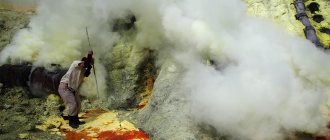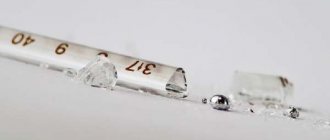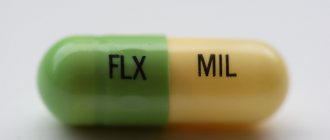Castor bean is an ornamental fast-growing annual plant of the Euphorbiaceae family, which has medicinal properties. Large curly star-shaped leaves and fruits in the form of boxes give the plant a decorative appearance. Castor bean seeds are brightly colored and have a peculiar shape, reminiscent of a tick in outline, hence the name of the plant.
Source: depositphotos.com
It is in the seeds, which are used to obtain castor (castor) oil, that the extremely toxic protein ricin is contained in the greatest quantities. Ricin is 6 times more toxic than potassium cyanide; when it enters the human or animal body, irreversible damage quickly develops, which is why castor beans are considered the most poisonous seed plant.
In addition to ricin, mainly contained in the seeds (castor beans), castor beans also contain the alkaloid ricinin. Ricinin is present in all parts of the plant, it is toxic, but less than ricin.
Description
Castor bean is a poisonous plant, an ornamental, medicinal and oil-bearing shrub of the Euphorbium family. This plant has been known since ancient times. Its description can be found in the written monuments of Ancient Egypt, where castor oil was used for ointments and in lamps. In antiquity, the shrub was nicknamed mite (ricinus) for the appearance of the beans.
In its homeland, in tropical latitudes, the plant can reach 10 meters, while in our country it does not exceed two or three. You can recognize it by its thick purple trunk and large shiny leaves. The stems are straight, branched, with a waxy coating, and hollow inside. Color ranges from pink to purple to black. The color of the leaves is purple, green or even bluish-red.
When decorating the garden with this shrub, it is important to take into account that its seeds are very toxic. Therefore, it is better to plant it away from playgrounds and places where pets can be walked.
General characteristics
Castor bean is an ornamental annual plant characterized by intensive growth. In just one season, a seed can grow into a “tree.” This representative of the Euphorbia family has medicinal properties, therefore it is widely used as a means of official and traditional medicine.
The name is due to the fact that the seeds resemble a mite in appearance. The stem is tall and erect. The leaves are large, shaped like a multi-rayed star, and depending on the variety they are green or dark burgundy in color. The inflorescences are small, cream-colored. The fruits are hidden in oval boxes covered with thorns, a rich crimson-red color. The clusters of these boxes are very decorative and can attract children. The fruits (seeds) themselves have a variegated color and are similar in appearance to beans.
The crown of the plant resembles a palm tree.
Harm and benefit
The substances that make up castor bean are widely used by doctors as an effective ruminator. It is also effective during childbirth, as it strengthens the uterine muscles and has the ability to cause strong labor contractions.
Medical castor oil is famous for its particularly strong effects. There is so much of it in castor seeds that technical grades of this oil are used in industry: aircraft construction, the production of lubricants, soap, the creation of varnishes and paints. As for pharmaceuticals, seed oils are included in many healing ointments, strong throat remedies, and medications prescribed for urolithiasis.
In addition, castor oil serves as a strong healing agent for damaged integumentary or internal tissues. It is also used as a cosmetic product. Traditional healers use seed oils for contraception and for the prevention of tumor pathologies.
Beneficial features
The oil of this plant is used to make lubricants that are used in aviation. This substance is also used in making soap, in the production of paints and varnishes, and leather.
I also found a use for the cake of this plant. It is used to produce glue. Even in the production of castor oil, castor oil is used. The plant is of great benefit for medicinal purposes.
The oil that comes from castor bean seeds is one of the components of the medicine Urolesan, Vishnevsky ointment.
This substance has a mild laxative effect, helps to cope with developed constipation, and helps to improve the functioning of the gastrointestinal tract in case of poisoning.
Castor oil is the basis of ointments and creams. This is a truly unique product that is not easy to find a replacement for.
Virulence
With all its beneficial qualities, castor does not cease to be a dangerous, toxic shrub in all its organs. There are two types of toxins that make it this way:
- protein ricin,
- alkaloid ricinin.
Ricin is an extremely poisonous protein toxin (the average lethal dose for an adult is 0.3 mg/kg by mouth). Ricin is mainly found in seed coats - the most toxic and dangerous part of the bush. In appearance, they look not only like ticks, but also like bean seeds, which is why they can cause erroneous gastronomic interest and a dangerous desire to try.
Ricinin is found in all other organs of the plant. During the flowering period, especially a lot of ricinin accumulates in flowers. According to its toxic characteristics, the alkaloid ricinin is related to potassium cyanide, but is 6 times more toxic. Therefore, the symptoms of poisoning by this representative of the flora are much more pronounced and are much more painful. Due to toxic ricinin, after removing castor oil, the cake is not suitable for livestock feed.
A couple of dozen castor beans are enough for an adult to die, and six is enough for a child. Castor oil is hydrolyzed to break down the ricin protein. The alkaloid ricinine loses its toxic properties when heated intensely.
Chemical composition
Castor beans contain a number of chemicals that make the plant useful, but also cause it to have toxic properties. Includes:
- glycerol;
- essential oils;
- fatty acids - oleic, ricinoleic, linoleic.
Castor beans contain alkaloids:
- ricin - in the shell of the fruit (the most poisonous part);
- ricinin (ricin derivative) - in seeds, leaves, cake, flowers.
These substances belong to the cyano group. Their toxicity level in pure form is more than 5 times higher than the corresponding indicators of potassium cyanide.
The influence of toxins, a description of the effect of castor on the body
The danger of the ricin protein is mainly determined by the fact that, penetrating inside the cell, it blocks the activity of ribosomes, disrupting protein synthesis. Why does the automatic self-destruction of the cell turn on? The body has no defense against ricin due to the fact that ricin mimics friendly proteins that the cell's defenses do not see as dangerous.
In the stomach and intestines, ricin destroys the mucous membrane and penetrates into the blood, which spreads it throughout the body, causing severe destruction of the tissues of internal organs. The liver, spleen and kidneys are especially affected.
You can get poisoned not only through the gastrointestinal tract, but also through the respiratory tract. Inhalation of dangerous castor dust, for example, when working with it to obtain castor oil. Toxins affect the lung tissue, which leads to edema and hypoxia.
Shrub toxins cannot penetrate the skin, so contact with it is not enough to cause poisoning if you wash your hands. If chickens or pigs are poisoned with castor, their meat will be suitable for food only after careful removal of toxic blood and internal organs.
Maintenance of castor seedlings and planting seedlings in the garden
The development of castor seedlings is very fast. Even before the first true leaf appears, the stems of the seedlings begin to stretch. Therefore, as soon as the first true leaf appears on castor seedlings, it is better to move the seedlings to a cool, bright place.
There are recommendations to carry out several transfers of developing castor seedlings, but I never do this. It’s just that when I plant seeds, I fill each cup halfway with the substrate. And then, when the seedling’s stem begins to grow rapidly, I add soil almost to the edge of the cup.
I plant castor seedlings in a permanent place after the end of spring frosts. To prevent the earthen ball from falling apart when transferring castor bean seedlings from plastic cups into the garden, and the roots are not injured, I water the seedlings abundantly before planting. Peat cups are convenient because they can be buried in the ground, and in this case, transshipment is not required.
Symptoms of poisoning
The main danger is the secrecy of the symptoms; they appear with such a time delay that it is not always easy to determine the connection between a poisonous plant and poisoning. Therefore, adults cannot say why they feel so bad, not to mention children. Specific symptoms make themselves felt within a day, or even later.
If particles of castor beans enter the stomach, symptoms of intoxication will appear within 24 hours. The deterioration of the condition will begin with a strong burning sensation in the throat and continue with the following symptoms:
- nausea and increased vomiting, sometimes with blood,
- sharp pain in the abdomen,
- diarrhea, sometimes black,
- blood from the anus.
Next, the following dangerous symptoms will occur:
- lowering blood pressure,
- weakening and increased heart rate,
- prostration,
- intense headaches,
- thirst and dry mouth.
When toxins enter the body through the lungs, the patient begins to suffer from a cough with blood discharge, difficulty breathing, and lack of oxygen. Severe castor bean infestation is often accompanied by hallucinations, delusions, disorientation, and lack of coordination. One of the characteristic symptoms of ricin intoxication is multiple effusions of blood in the retina.
If medical care is not provided in a timely manner, the condition will deteriorate rapidly. The functioning of the kidneys will be disrupted, and bleeding will begin in the lungs. Cerebral hemorrhage with loss of consciousness often occurs. Therefore, without qualified help, collapse and death occur within a week.
Possible consequences
After saving the victim from intoxication, negative consequences remain. Harm to health is proportional to the effect on internal organs. The digestive organs are the first to suffer. The patient develops acute hemorrhagic inflammation, which often becomes chronic.
Severe disturbances occur in the tissues of the liver and pancreas. Hepatitis of a toxic nature often develops, the synthesis of bile, insulin and pancreatic enzymes is disrupted. In case of severe poisoning, kidney function is impaired. If help is provided on time, the urinary system remains almost completely healthy. The health of the heart and blood vessels can be restored.
Cases of castor bean poisoning occur frequently, since many people plant this plant as an ornamental plant, not knowing about its toxic properties. Eating seeds leads to irreversible consequences. Even with timely medical care, it is impossible to restore health completely.
First aid and treatment specifics
In case of poisoning with castor toxins, priority assistance measures should be aimed at stopping the spread of toxins in the blood and quickly transporting the victim to a medical center for qualified treatment. In home circumstances, before the arrival of doctors, the patient must be given all possible assistance:
- give the patient a lot to drink, induce vomiting,
- give an absorbent (activated carbon),
- To protect the mucous membrane of the digestive organs, jelly decoctions and starch are used.
The patient needs bed rest and complete rest. How good the first aid measures will be for a patient is a matter of life and death. According to statistics, with competent timely actions, death does not occur more than 2% - versus 7% without them.
There is no antidote for castor bean toxins yet. His medical developments are still far from successful results. Therefore, all subsequent medicinal assistance will serve to cleanse the patient’s blood, relieve dangerous symptoms and stop the development of poisoning. The following medical measures may be helpful:
- blood transfusion (blood transfusion),
- repeated bowel cleansing,
- administration of analgesics, since the pain is very strong,
- to enhance kidney function, the patient is given diuretics,
- oxygen therapy.
During treatment, the patient is under constant medical supervision. However, even if the patient was able to save his life, most often it is not possible to save the functionality of individual organs.
Precautionary measures
It is necessary not to forget about the dangerous properties of castor beans and to be especially vigilant in areas where they grow. Children and pets should be protected from contact with this poisonous shrub. It is necessary to tell children about the dangers, that it is unacceptable to try castor beans, and about the consequences of poisoning with them.
After any handling of this plant, you must thoroughly wash your hands with detergent. It is better to try to prevent poisoning than to suffer from severe irreversible damage afterwards.
Video: beautiful but dangerous castor bean
Read further:
7 best sorbents for cleansing the body: review and application
Ricin poison - what is it, origin and effect on humans
Rehabilitation after a heart attack, prevention of new attacks and care
Oxygen cocktail: benefits and harm for the body of children and pregnant women
Hepatitis C, symptoms and treatment
Article rating:
Share with friends:
You may also be interested in:
What are the benefits and harms of mushrooms?
Is it possible to get poisoned by dried mushrooms?








